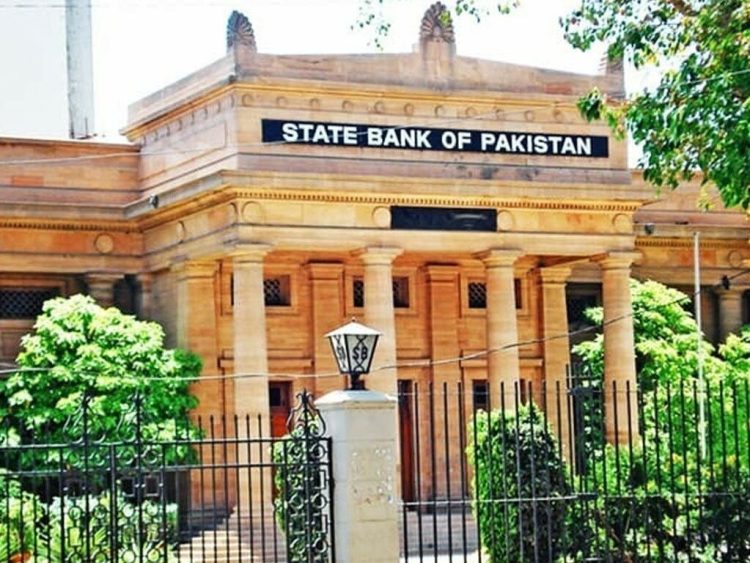During the first half of fiscal year 2024, Karachi witnessed an improvement in Pakistan’s economic conditions, as indicated by the “State of Pakistan’s Economy” report issued by the State Bank of Pakistan (SBP) on Tuesday.
The report encompasses an analysis prepared based on the data and figures from July to December of fiscal year 2024.
According to the report, the real economic activities were stabilized against the backdrop of last year’s challenges, while the Stand-By Arrangement (SBA) with the IMF aided in reducing external pressures.
Moreover, consistent monetary and fiscal policies, improved agricultural yields, and ease in global commodity prices significantly reduced the current account deficit.
Financially, the fundamental balance posted a surplus in contrast to the first half of fiscal year 2023, leading to a substantial increase in both tax and non-tax revenues, thereby narrowing the deficit in non-interest expenditures.
Despite limited domestic demand, inflationary pressures remained elevated, noted the report.
The real GDP, primarily driven by the industrial sector, grew by 1.7 percent during the first half of fiscal year 2024. The industrial revival also supported some industrial segments.
Furthermore, improved availability of raw materials for industry was attributed to successful import substitutions.
IMF’s approval of SBP’s policies reduced obstacles to external borrowing, resulting in an increase in financial reserves during fiscal year 2024.
Additionally, reduced repayment of previously contracted external debts and a significant decrease in current account deficits compared to the first half of fiscal year 2023, along with reduced imports, supported the SBP’s foreign exchange reserves.
Despite reduced domestic demand and lower global commodity prices, the report highlights a collection of long-standing issues, including a depreciation of PKR compared to fiscal year 2023, an increase in government expenditures, and supply shocks that have kept the national Consumer Price Index (NCPI) elevated.
During the transitional phases, the increase in the price of basic commodities, coupled with an expansion in indirect taxes,
and the announcement in the budget of fiscal year 24 declaring a minimum wage increase, along with the implementation of upward revisions in food and energy items prices, were responsible for sustained inflationary pressures.
The responsible authorities were accountable for ensuring continuity in this regard. Major challenges during the first half of fiscal year 24 included fundamental macroeconomic constraints.
The report sheds light on the fact that despite some improvements in macroeconomic indicators, the economy is grappling with structural impediments.
Limited fiscal space, reduced physical and human capital investment, weakened production capacity, vulnerability to external shocks, a narrow tax base, and inefficiencies in public sector enterprises are among the major issues.
Furthermore, the prevailing political uncertainty exacerbates the economic policy inconsistencies,
weak governance, and impediments to investment, further deteriorating the current economic situation. Policy reforms are necessary to ensure sustained long-term economic development.
The report includes a special section that analyzes the prolonged trends of structural imbalances in Pakistan and assesses their components.
It also illuminates policies and structural elements affecting inflation, including monetary policy frameworks, fiscal and debt policies, trade competitiveness, agricultural productivity, production capacity, and demographic trends.
The section concludes that addressing the uncertainties in political and policy environments and achieving further fiscal consolidation in the short term can help reduce inflationary pressures.
Emphasis has also been placed on resolving structural issues to achieve sustainable and stable inflation in the medium term, even without significant increases in economic output.
The report anticipates moderate economic recovery in the second half of fiscal year 24. Improvements in business confidence,
the prospect of high-frequency demand indicators since November 2023, and favorable outlooks for wheat production during FY24 have led the SBP to estimate real GDP growth in the range of 2-3 percent for fiscal year 24.
However, despite the expected stability in domestic inflation and subdued global economic and demand conditions, there is a likelihood of downward pressure.
Taking external factors into account, SBP expects average CPI inflation to range between 23.0 – 25.0 percent for fiscal year 24, lower than the 29.2 percent in fiscal year 23, with a further decline to 5-7 percent by September 2025.
On the external front, the possibility of lower CAD from previous estimates, increased foreign exchange earnings from better global sentiment and prospects for domestic growth, could contribute to an increase in the current account surplus for fiscal year 24.
The State Bank offers a forecast of 0.5 to 1.5 percent for the current account deficit for fiscal year 24.
This macroeconomic outlook is sensitive to geographical and political tensions, adverse weather conditions, negative changes in global oil prices, and external pressures.
Further adjustments in energy prices and financial stabilization – reducing the pace of debt accumulation – could also have an impact on summer energy prices and inflation.

